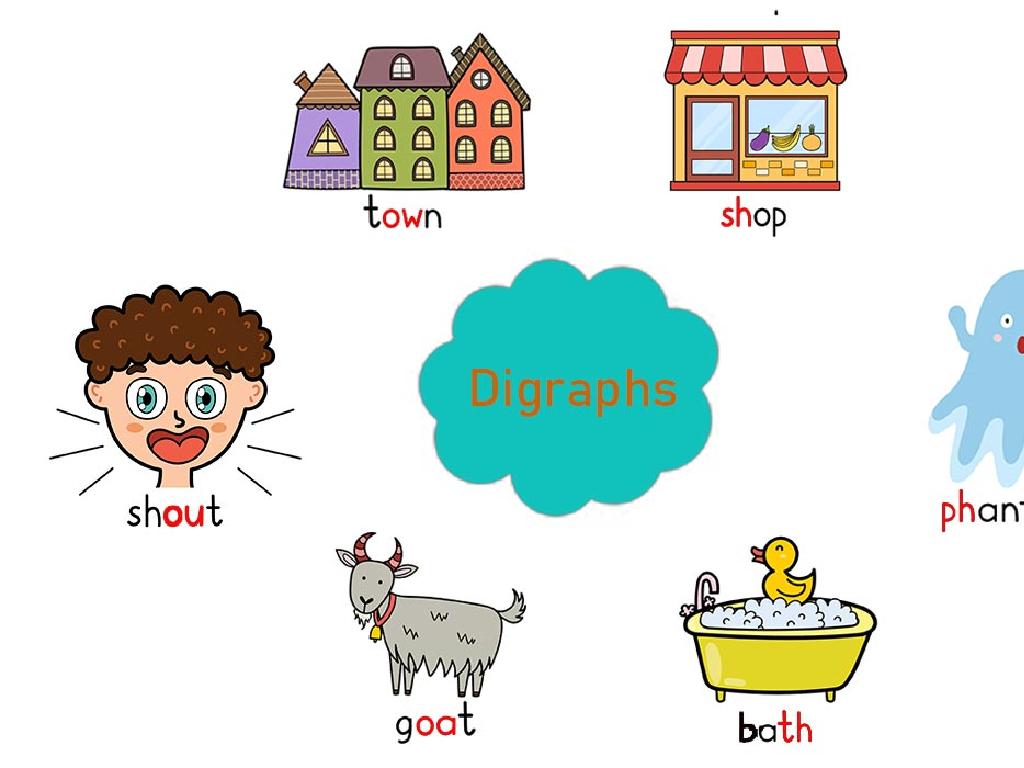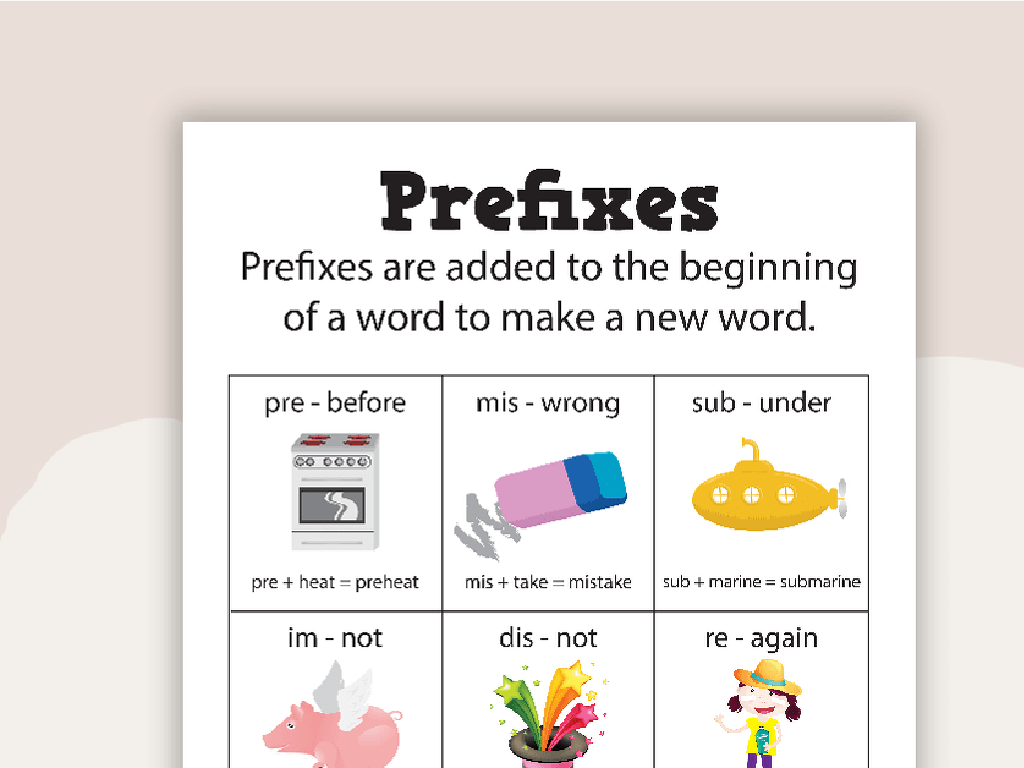Estimate Sums And Differences Of Mixed Numbers
Subject: Math
Grade: Seventh grade
Topic: Operations With Fractions
Please LOG IN to download the presentation. Access is available to registered users only.
View More Content
Estimating Sums & Differences of Mixed Numbers
– Why estimation is key
– Estimation simplifies complex math, making it manageable.
– Estimation in daily life
– Used in time management, budgeting, and shopping.
– Rounding mixed numbers
– Round to nearest whole number for ease.
– Estimating sums and differences
– Add or subtract rounded numbers to estimate.
|
This slide introduces the concept of estimation within the context of operations with fractions, specifically focusing on mixed numbers. Estimation is a critical skill that simplifies complex calculations by rounding numbers to a more manageable form. In daily life, estimation is essential for tasks such as managing time, creating budgets, and making quick decisions while shopping. Teach students to round mixed numbers to the nearest whole number to simplify the process. Then, demonstrate how to add or subtract these rounded numbers to estimate the sum or difference. Provide examples and encourage students to practice with real-life scenarios where estimation could be applied.
Understanding Mixed Numbers
– Define mixed numbers
– A number made up of a whole number and a fraction, e.g., 2 3/4
– Examples of mixed numbers
– Pizza slices: 1 whole pizza + 2/8 slices, or time: 3 hours + 1/2 hour
– Convert to improper fractions
– Multiply the whole number by the denominator, add the numerator, e.g., 2*4+3 for 2 3/4
– Why conversion is useful
|
Begin with a clear definition of mixed numbers, ensuring students understand the concept of combining whole numbers with fractions. Provide relatable examples such as portions of pizza or measurements of time to solidify their understanding. Teach the process of converting mixed numbers to improper fractions, which is a crucial skill for performing operations with mixed numbers. Emphasize the importance of this conversion in simplifying calculations and solving more complex problems involving mixed numbers. Encourage students to practice this conversion with various examples and to understand when and why it’s necessary in mathematical operations.
The Power of Estimation
– Understanding the need to estimate
– Not all situations require precise numbers
– Estimation saves time
– Quick approximations help in decision-making
– Estimation versus exact answers
– Estimation is faster, but less precise than exact calculation
– Practical uses of estimation
– Useful in everyday scenarios like shopping or cooking
|
This slide introduces students to the concept of estimation within the context of operations with fractions. Estimation is a valuable skill, particularly when exact answers are not necessary, such as in scenarios where a rough idea is sufficient for decision-making. Emphasize that while estimation can save time, it is less precise than performing exact calculations. Encourage students to think about times when they have used estimation in their daily lives, such as guessing the total cost while shopping or measuring ingredients while cooking. Discuss the balance between the need for speed and accuracy in different situations.
Estimating Sums with Mixed Numbers
– Round mixed numbers to whole
– Round 3 1/2 to 4, and 4 3/4 to 5
– Add the rounded numbers together
– If rounded numbers are 4 and 5, their sum is 9
– Compare estimates with exact sums
– Estimated sum of 9 vs. exact sum of 8 1/4
– Understand estimation accuracy
– Estimation helps in quick calculations but has a margin of error
|
This slide introduces students to the concept of estimation in arithmetic operations involving mixed numbers. Start by explaining the process of rounding mixed numbers to the nearest whole number, emphasizing the importance of understanding when to round up or down. Then, guide students through the process of adding these rounded numbers to find an estimated sum. Encourage students to compare their estimated results with the exact sums to understand the differences and the situations in which estimation is useful. Highlight that while estimation can speed up calculations, it is not always precise, and there is a trade-off between speed and accuracy.
Estimating Differences with Mixed Numbers
– Round mixed numbers before subtracting
– Round to the nearest whole number for simplicity
– Perform subtraction with rounded numbers
– Subtract the rounded numbers to estimate the difference
– Compare estimated and exact differences
– Analyze how close the estimates are to the actual values
|
This slide focuses on the estimation of differences when dealing with mixed numbers. Students should first round each mixed number to the nearest whole number to simplify the subtraction process. After rounding, they will subtract these numbers to find an estimated difference. It’s crucial to emphasize the importance of estimation in checking the reasonableness of answers. Finally, students should compare their estimated results with the exact differences to understand the accuracy of their estimations. Encourage students to practice with different sets of mixed numbers to gain confidence in estimating differences.
Estimation Strategies with Mixed Numbers
– Use benchmarks for estimation
– Round to nearest whole number or fraction
– Apply front-end estimation
– Add or subtract leading digits, ignore rest
– Cluster around an average
– Group numbers, find average, estimate total
– Practice estimation techniques
|
This slide introduces students to various strategies for estimating sums and differences of mixed numbers. Benchmarks involve rounding numbers to the nearest whole number or common fraction to simplify calculations. Front-end estimation focuses on the most significant digits and adjusts the final sum or difference accordingly. Clustering is useful when numbers are close in value; by finding their average, students can quickly estimate a total. Encourage students to practice these techniques with real-world examples, such as estimating the total cost of items in a shopping cart or the total distance covered in a trip. Provide exercises for each method to solidify their understanding.
Class Activity: Estimation Station
– Pair up for estimation practice
– Estimate sums and differences
– Apply skills to real-life scenarios
– For example, use scenarios like shopping budgets or measuring ingredients for a recipe.
– Discuss estimates with the class
|
This interactive class activity is designed to enhance students’ estimation skills with mixed numbers in a collaborative and practical setting. Students will pair up to work through a series of estimation problems, focusing on sums and differences of mixed numbers. Encourage them to use rounding to estimate the results. Provide real-life scenarios such as calculating expenses within a budget or adjusting a recipe, which will help them understand the importance of estimation in everyday life. After the activity, facilitate a class discussion where pairs can share their estimates and the strategies they used to arrive at them. This will allow students to learn from each other and reflect on the accuracy of their estimations. Prepare 4-5 different scenarios so that not all students are working on the same problem, which will make the sharing session more engaging and informative.
Wrapping Up: Estimation Techniques
– Review of estimation methods
– Significance of estimation practice
Estimation saves time and helps in checking the reasonableness of answers.
– Homework: Estimation worksheet
Complete the provided worksheet on estimating sums and differences of mixed numbers.
– Prepare for next class discussion
Be ready to discuss your strategies and solutions.
|
As we conclude today’s lesson, it’s crucial to recap the estimation techniques we’ve learned, emphasizing their practicality in everyday math problems and their role in verifying the correctness of more precise calculations. For homework, students are assigned a worksheet that will allow them to apply these techniques to estimate sums and differences of mixed numbers. This practice will reinforce their understanding and prepare them for a class discussion where they will share their approaches and thought processes. Encourage students to attempt the worksheet independently and remind them that estimation does not always yield exact answers, but rather reasonable approximations.






